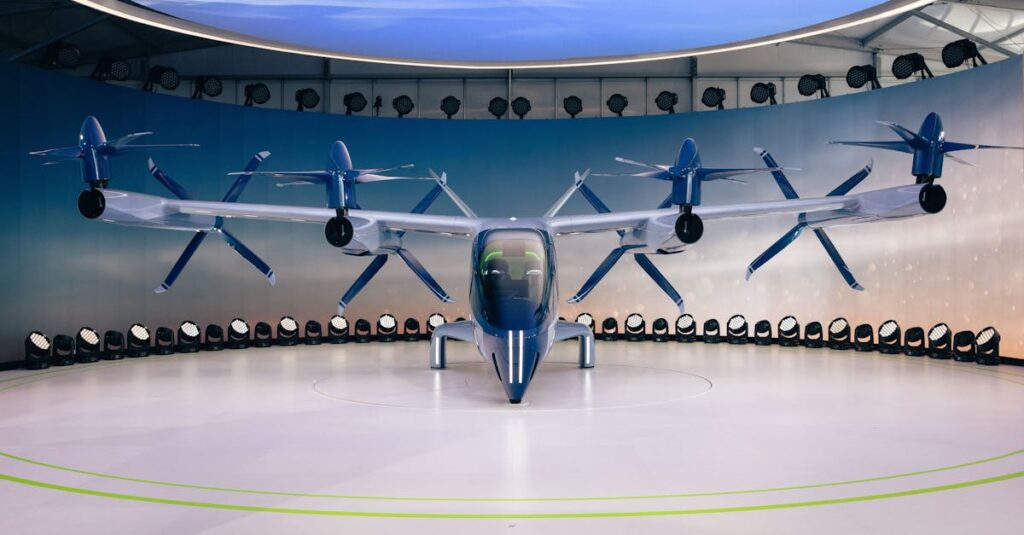The Dream of Flying Cars
Flying cars have been a part of sci-fi fantasies for decades. Think back to Back to the Future II, where Marty McFly zips around in a hovercraft-like vehicle, or the Jetsons, whose futuristic world had cars soaring through the air on a whim. But in 2025, we’re still waiting for our airborne commute to become a reality. So, what’s the holdup? And more importantly, when can we expect to actually see flying cars on the road… or sky?
The Technology Behind Flying Cars
The first thing to understand is that a flying car isn’t just some regular car with a set of wings slapped on it. It’s an entire rethinking of how we travel. Companies and researchers are working on vehicles that can both drive on roads and take flight, or that can vertically take off and land, like a helicopter.
In the past few years, we’ve seen some major technological breakthroughs. There are prototypes from companies like Terrafugia and Joby Aviation that show real promise. Joby, for example, has created a fully electric vertical takeoff and landing (eVTOL) aircraft that can seat up to five people. The idea is to integrate flying cars into existing transportation networks, not just as a gimmick for the rich and famous.
But the technology isn’t perfect yet. Flying cars still need to be safer, quieter, and more efficient to be truly viable. The batteries are heavy, and the infrastructure to support them, like charging stations and air traffic control for these vehicles, still needs to be developed. Even if the tech is there, the real challenge lies in mass production and scaling.
Challenges Standing in the Way
One of the biggest hurdles is regulation. Aviation is highly regulated, and rightfully so, safety is the priority. But applying the same level of scrutiny to personal flying cars is going to be a massive undertaking. Think about all the hurdles aviation went through in the early 20th century. The Wright brothers didn’t just build a plane and take off; they had to fight for airspace rights, safety standards, and government regulations. Similarly, flying cars will need to go through a lot of legal red tape.
There’s also the issue of air traffic. Can you imagine the chaos if every commuter in a big city had their own flying car? Cities like New York would have gridlock in the skies instead of just on the roads. To make it work, we’ll need to develop air traffic systems that can monitor and manage thousands, or even millions, of flying cars. That’s no small task.
Plus, let’s not forget about public acceptance. Even if flying cars become available tomorrow, would you be comfortable getting into one? The technology has a lot of catching up to do before it can truly be as safe as cars are today. And while the idea sounds cool, flying through the air might not be everyone’s idea of an improvement.
When Will Flying Cars Arrive?
So, when can we expect flying cars to hit the market? Well, it’s not as simple as flipping a switch. Some experts say that we might see flying cars used in limited urban air mobility (UAM) applications, like air taxis, within the next decade. But this doesn’t mean flying cars will be on every driveway by 2030.
To put it in perspective, electric cars didn’t take over the roads overnight. They were a niche product for years before they began making mainstream strides, and the same is likely true for flying cars. We might see limited rollouts in specific regions where demand is high, or in controlled environments like airports or private estates. Cities that are investing heavily in smart transportation, such as Dubai and Singapore, may lead the charge. Dubai already has plans for autonomous flying taxis as early as 2023, though it’s more of a “wait-and-see” situation.
The Reality of Urban Air Mobility
Urban air mobility, or UAM, is the broader term for using drones or flying cars to reduce traffic congestion in cities. While we’re still a long way from seeing flying cars as the norm, we’re seeing things like autonomous air taxis, delivery drones, and short-distance flight services taking off (pun intended). For example, in 2020, a company called Lilium conducted its first successful test flight of a vertical takeoff jet, designed for air taxis. A similar company, Volocopter, has been testing electric vertical takeoff and landing vehicles for the past few years, aiming to bring them into the air taxi market by the late 2020s.
The catch? These vehicles still need to prove they can handle mass production, real-world traffic, and longer distances. And let’s not forget about the environment. As cool as flying cars might sound, are they sustainable? Electric-powered vehicles are a step in the right direction, but how they’re charged and the carbon footprint of building these machines are all factors to consider.
Real-World Use: More Than Just A Fantasy
In the real world, flying cars could solve a lot of practical problems. Imagine a world where you no longer have to sit in traffic for hours on end. Instead, you could hop in your flying car, go up 200 feet, and bypass all the congestion below. Or think about how flying cars could make remote areas more accessible. Emergency medical response teams could use flying vehicles to reach hard-to-get-to places, delivering supplies or taking patients to hospitals.
Flying cars could even change how cities are designed. With less need for sprawling roads, we could see more pedestrian-friendly spaces and greener cityscapes. But all of that depends on whether the logistics and technology can keep up with the vision.
Conclusion: The Sky’s Not the Limit, Yet
In conclusion, flying cars are not the stuff of distant, unattainable dreams. They’re closer than we think, but they’re not quite ready to land in our driveways just yet. We can expect to see small-scale urban air mobility services within the next decade, but it will take time for the infrastructure and regulations to catch up. Flying cars have the potential to revolutionize transportation, but the journey to get there will be filled with bumps, literally and figuratively.
For now, we can dream, watch, and wait. But in a world that’s rapidly evolving, who knows? The sky might just be the next frontier for our daily commute.

